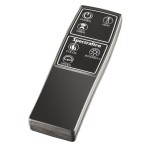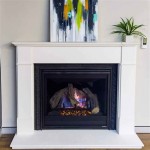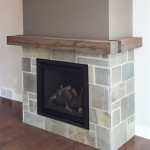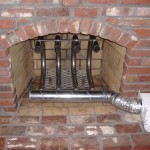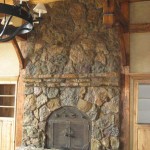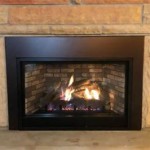Fireplace Designs with TV: Balancing Aesthetics and Functionality
The integration of a fireplace and a television within a living space presents a unique challenge in design. Both elements serve as focal points, commanding attention and contributing significantly to the overall ambiance of a room. Successfully combining these features requires careful consideration of aesthetics, functionality, and safety. The goal is to create a cohesive design that enhances the viewing experience, provides warmth and comfort, and complements the existing decor.
Many homeowners desire a comfortable and visually appealing living area where they can relax and entertain. The combination of a fireplace and a television is often considered a desirable amenity, offering both warmth and entertainment in a single location. However, the improper arrangement can lead to an awkward or even visually jarring aesthetic, detracting from the overall enjoyment of the space. Therefore, a thoughtful and well-executed design is crucial for a harmonious integration.
Several factors influence the successful integration of a fireplace and a television. These include the size and layout of the room, the style of the fireplace, the type of television, and the desired viewing angle. Additionally, safety considerations, such as heat management and proper ventilation, are paramount. This article will explore various design options for combining these elements, providing insights into the key considerations for achieving a balanced and functional space.
Optimizing Viewing Height and Distance
One of the most critical aspects of designing a fireplace with a TV is determining the optimal viewing height and distance. Placing a television too high can lead to neck strain and discomfort, while positioning it too low can obstruct the view. The ideal viewing height is generally considered to be at eye level when seated. This means that the center of the television screen should be approximately 42 inches from the floor, although this can vary based on individual preferences and seating arrangements.
The distance between the seating area and the television is also an important factor. A general rule of thumb is to multiply the screen size (measured diagonally) by a factor of 1.5 to 2.5 to determine the optimal viewing distance. For example, a 55-inch television would ideally be viewed from a distance of 82.5 to 137.5 inches (approximately 7 to 11.5 feet). This distance allows for comfortable viewing without excessive eye strain or pixelation.
When incorporating a fireplace, the height of the mantel and the distance between the fireplace and the television become even more critical. A higher mantel may necessitate raising the television, potentially exceeding the optimal viewing height. In such cases, consider using a tilting wall mount that allows for downward adjustment of the screen angle. Alternatively, explore designs that lower the fireplace or incorporate a recessed area above the mantel to accommodate the television at a more comfortable height.
Furthermore, consider the type of fireplace being used. A traditional wood-burning fireplace typically generates more heat than a gas or electric fireplace. Therefore, it is essential to ensure that the television is adequately shielded from the heat to prevent damage. This can be achieved through proper insulation, adequate spacing between the fireplace and the television, and the use of a mantel or other barrier to deflect heat away from the electronic components.
Exploring Different Design Configurations
There are several design configurations for integrating a fireplace and a television, each with its own advantages and disadvantages. The most common configuration is to mount the television directly above the fireplace. This approach creates a unified focal point and maximizes space efficiency. However, it can also lead to the aforementioned issues of viewing height and heat exposure. To mitigate these challenges, consider using a low-profile fireplace, installing proper heat shielding, and employing a tilting wall mount.
Another option is to position the fireplace and the television side-by-side. This configuration allows for greater flexibility in terms of viewing height and heat management. It also enables the creation of a more balanced and symmetrical aesthetic. The fireplace and television can be flanked by bookshelves, cabinets, or other decorative elements to create a cohesive and visually appealing arrangement. This design is particularly well-suited for larger rooms where there is ample space to accommodate both features without feeling cramped.
A less common but increasingly popular design is to offset the fireplace and the television. This approach involves positioning the fireplace and the television on different walls or at different heights. This can create a more dynamic and visually interesting space, but it requires careful planning to ensure that the two elements complement each other and do not compete for attention. The offset design is often used in modern or contemporary homes where asymmetry is embraced as a design principle.
In addition to these configurations, there are also more unconventional approaches to integrating a fireplace and a television. For example, some homeowners opt to conceal the television behind a retractable screen or within a cabinet when not in use. This allows for a cleaner and more minimalist aesthetic, while still providing the option of enjoying television viewing when desired. Another option is to incorporate the television into a larger media wall, which can include bookshelves, storage cabinets, and other decorative elements. This approach creates a dedicated entertainment zone and provides ample space for all of the necessary components.
Material Selection and Aesthetic Considerations
The choice of materials and the overall aesthetic of the fireplace and surrounding area are crucial for creating a cohesive and visually appealing design. The materials should complement the existing decor of the room and reflect the homeowner's personal style. Common materials for fireplace surrounds include brick, stone, tile, wood, and metal. Each material offers a unique texture, color, and character, allowing for a wide range of design possibilities.
Brick is a classic choice that adds warmth and character to any space. It can be used in a variety of styles, from rustic to contemporary, depending on the type of brick chosen and the way it is laid. Stone is another popular option that provides a natural and earthy feel. It is available in a wide range of colors and textures, from smooth river rock to rugged fieldstone. Tile is a versatile material that can be used to create a variety of patterns and designs. It is also easy to clean and maintain, making it a practical choice for high-traffic areas.
Wood is a warm and inviting material that can be used to create a variety of styles, from traditional to modern. It can be stained or painted to match the existing decor of the room. Metal is a sleek and modern option that adds a touch of sophistication to any space. It is often used in contemporary homes and can be combined with other materials, such as glass or stone, to create a unique and visually striking design.
In addition to the materials used for the fireplace surround, the color palette and overall design style should also be carefully considered. The fireplace and television should complement each other and the surrounding decor. A neutral color palette can create a calming and relaxing atmosphere, while bold colors can add energy and excitement. The design style should reflect the homeowner's personal taste and the overall aesthetic of the home. Whether it's modern, traditional, rustic, or eclectic, a cohesive design will ensure that the fireplace and television are seamlessly integrated into the living space.
Ultimately, the successful integration of a fireplace and a television requires careful planning, attention to detail, and a thoughtful consideration of aesthetics, functionality, and safety. By optimizing viewing height and distance, exploring different design configurations, and selecting appropriate materials, homeowners can create a comfortable and visually appealing space that enhances their enjoyment of both features. The key is to strike a balance between form and function, creating a cohesive design that reflects the homeowner's personal style and complements the existing decor.

Best Modern Fireplace Designs Blaze

Tv Above Fireplace Design Ideas

Modern Tv Wall With Fireplace Iv Yo Carpentry

Tv Over Fireplace Ideas An Overview Of Options

Contemporary Modern Fireplace Designs With Tv Above Mantel

Placing A Tv Over Your Fireplace Design Ideas Classic Living Room Home Family

Mantel Decorating With A Tv 10 Ideas And Tips Nina Hendrick

Real Life Rooms Decorating Ideas For A Tv Above Fireplace Remodelaholic

40 Stone Fireplace Designs From Classic To Contemporary Spaces Home Design

A Tv Over The Fireplace Design Yes Or Major No
Related Posts

